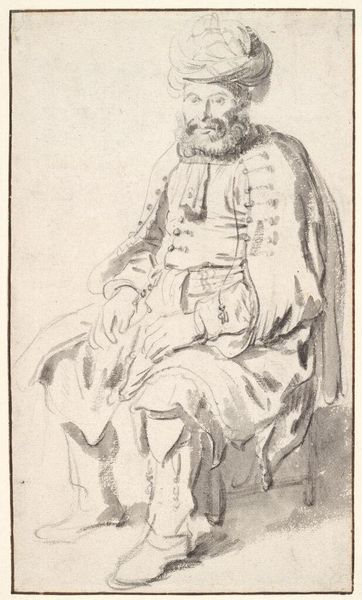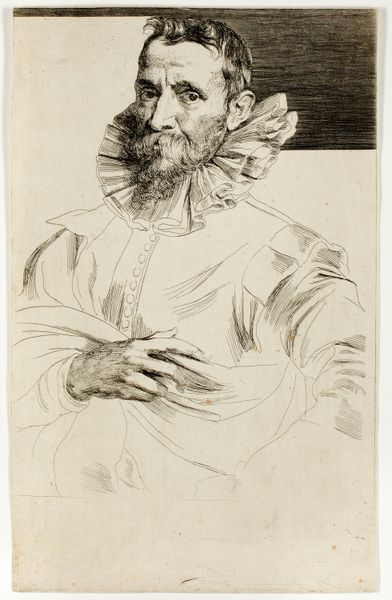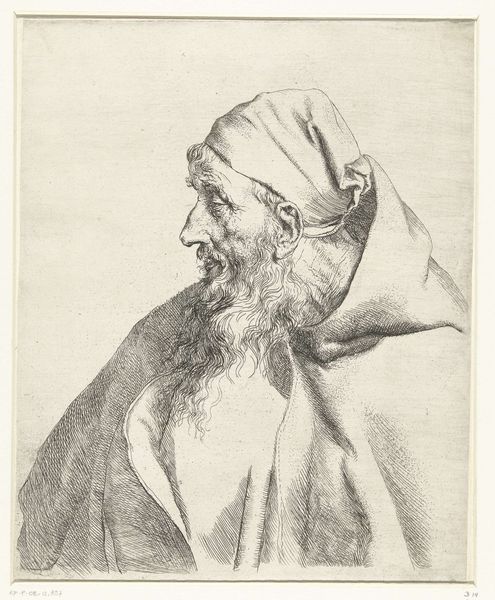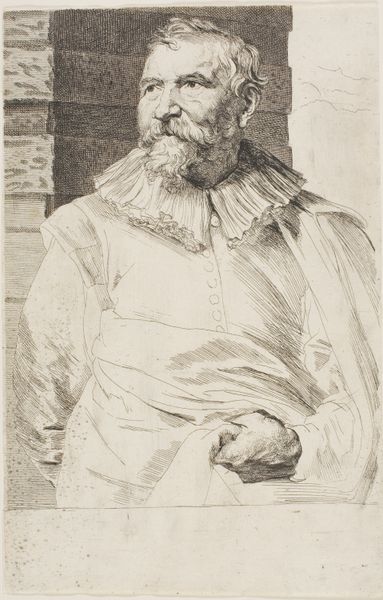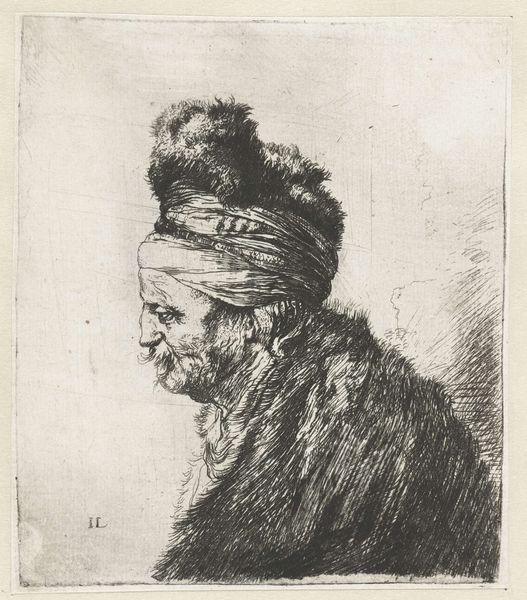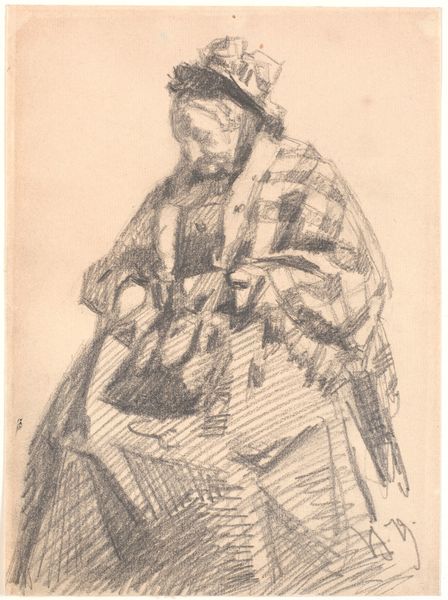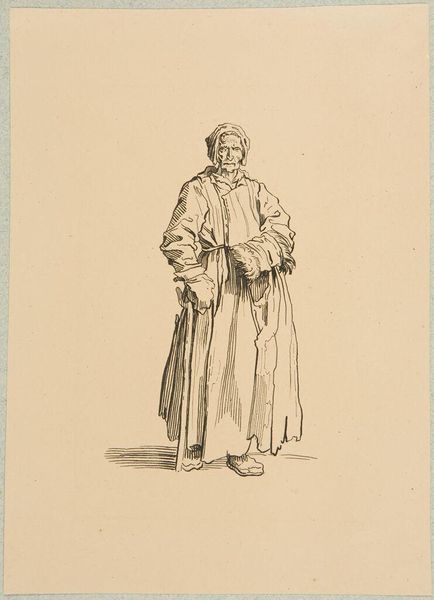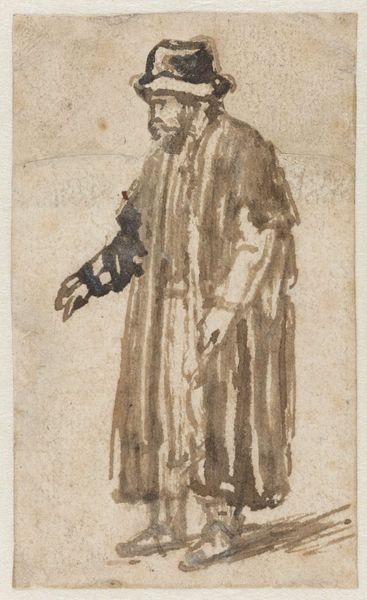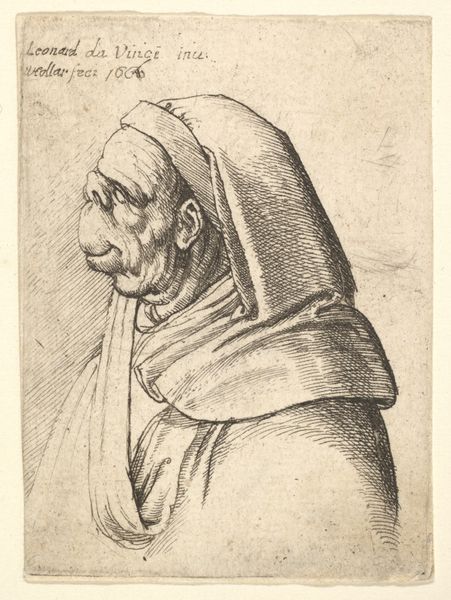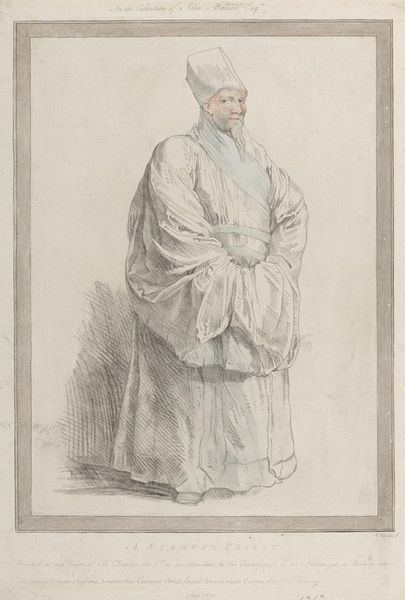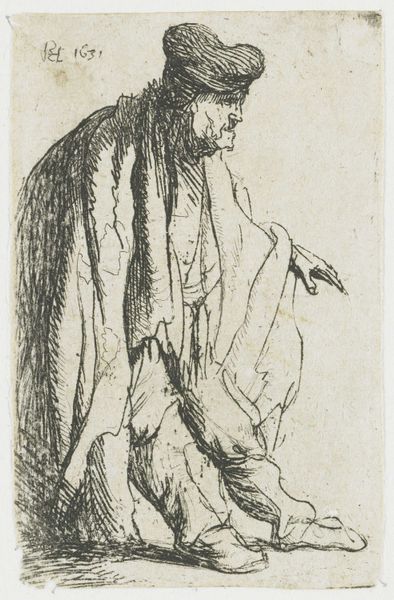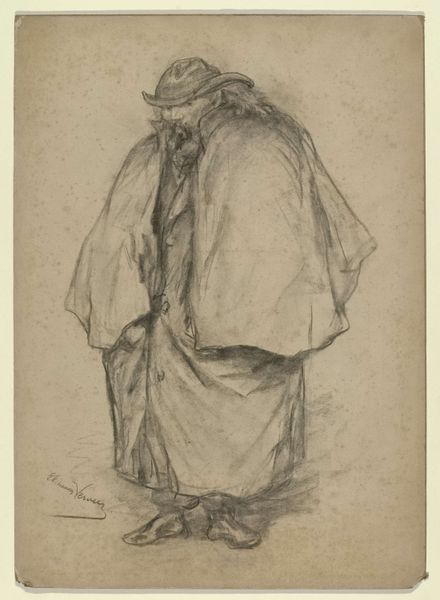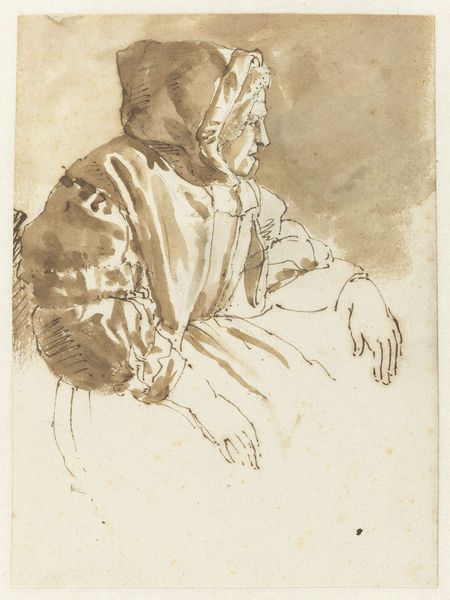
drawing, print, engraving
#
portrait
#
drawing
#
baroque
# print
#
line
#
history-painting
#
academic-art
#
engraving
Copyright: Public Domain: Artvee
Anthony van Dyck created this print of Desiderius Erasmus of Rotterdam using etching, a printmaking technique that relies on acid to bite into a metal plate. Van Dyck likely coated a copper plate with a waxy, acid-resistant substance, then used a needle-like tool to scratch his design into the wax, exposing the metal beneath. The plate was then submerged in acid, which ate away at the exposed lines. The longer the plate remained in the acid, the deeper and darker the lines would be. This process allowed Van Dyck to create subtle tonal variations in the print, lending depth and texture to the image. Etching, unlike engraving, allowed for a more spontaneous and fluid line, mimicking the freedom of drawing. This print demonstrates the skill required to control the biting process, achieving a delicate balance between precision and expressiveness. Considering this intricate method, it's fascinating how the final print collapses the boundaries between drawing, craft, and reproductive technology.
Comments
No comments
Be the first to comment and join the conversation on the ultimate creative platform.
